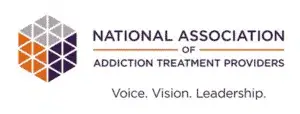Gabapentin withdrawal can be a challenging and potentially dangerous process that requires careful medical supervision and support. While gabapentin is often perceived as a safer alternative to other medications, stopping this drug abruptly after regular use can lead to serious withdrawal symptoms that may require professional medical detox services.
Understanding Gabapentin and Its Effects
Gabapentin, sold under brand names like Neurontin and Gralise, was originally developed as an anti-seizure medication but has since found widespread use for treating nerve pain, restless leg syndrome, and off-label conditions including anxiety and sleep disorders. Despite not being classified as a controlled substance until recently, gabapentin can cause physical dependence and withdrawal symptoms when discontinued.
How Gabapentin Works in the Brain
Gabapentin affects the nervous system by binding to calcium channels in nerve cells, which reduces the release of certain neurotransmitters associated with pain signaling and nerve excitability. This mechanism makes it effective for treating neuropathic pain and seizure disorders, but it also means that the brain adapts to the drug’s presence over time.
When someone takes gabapentin regularly, their nervous system adjusts to function normally with the medication present. This adaptation process, known as neuroadaptation, is what leads to physical dependence and the potential for withdrawal symptoms when the drug is discontinued.
This Season, Give Yourself the Gift of a Fresh Start.
Whether you are struggling with addiction, mental health or both, our expert team is here to guide you every step of the way. Don’t wait— reach out today to take the first step toward taking control of your life.
Medical Uses and Off-Label Prescribing
Healthcare providers prescribe gabapentin for various FDA-approved conditions including epilepsy and postherpetic neuralgia, but the medication is frequently used off-label for conditions like chronic pain, anxiety disorders, bipolar disorder, and sleep disturbances. This widespread off-label use has contributed to increased gabapentin prescriptions and, consequently, more cases of dependence and withdrawal.
The drug’s perceived safety profile compared to opioids and benzodiazepines has led to increased prescribing, but this has also resulted in more people experiencing unexpected withdrawal symptoms when trying to discontinue the medication.
Recognizing Gabapentin Withdrawal Symptoms
Gabapentin withdrawal symptoms can range from mild discomfort to severe, potentially life-threatening complications. Understanding these symptoms helps individuals and their loved ones recognize when professional help may be necessary.
Physical Withdrawal Symptoms
The physical symptoms of gabapentin withdrawal often resemble those seen with other central nervous system depressants. Common physical symptoms include severe headaches that may feel like migraines, nausea and vomiting that can lead to dehydration, tremors and muscle spasms throughout the body, excessive sweating even in cool environments, and significant changes in blood pressure and heart rate.
Sleep disturbances are particularly common during gabapentin withdrawal, with many people experiencing insomnia, vivid nightmares, or disrupted sleep patterns. These sleep problems can persist for weeks or months after discontinuation and significantly impact recovery efforts.
Psychological and Cognitive Symptoms
The psychological aspects of gabapentin withdrawal can be especially challenging and may include severe anxiety that feels overwhelming and uncontrollable, depression that ranges from mild sadness to severe hopelessness, irritability and mood swings that affect relationships and daily functioning, and cognitive difficulties including problems with concentration, memory, and decision-making.
Some individuals experience what’s called “brain fog,” a state where thinking feels cloudy or unclear. This can make it difficult to perform normal work or daily activities and may contribute to feelings of frustration and discouragement during the withdrawal process.
Severe Withdrawal Complications
In some cases, gabapentin withdrawal can lead to serious medical complications that require immediate professional intervention. The most concerning of these is the risk of seizures, which can occur even in people who were not originally taking gabapentin for seizure disorders.
Withdrawal seizures can be life-threatening and may occur days or even weeks after stopping gabapentin. This risk is particularly high for people who have been taking high doses or who stop the medication abruptly without medical supervision.
Other serious complications can include severe dehydration from persistent nausea and vomiting, dangerous changes in blood pressure or heart rhythm, severe depression with suicidal thoughts, and confusion or disorientation that may require medical evaluation.
Factors That Influence Withdrawal Severity
Several factors can affect how severe gabapentin withdrawal symptoms become and how long they last. Understanding these factors helps healthcare providers develop appropriate treatment plans and helps patients set realistic expectations for their recovery.
Dosage and Duration of Use
The amount of gabapentin someone has been taking and how long they’ve been using it are among the most significant factors affecting withdrawal severity. People taking higher doses typically experience more intense withdrawal symptoms, while those who have used gabapentin for extended periods may face longer withdrawal timelines.
Gabapentin doses can vary dramatically, from 300mg daily for some conditions to over 3600mg daily for others. People taking doses at the higher end of the therapeutic range or those using gabapentin off-label at very high doses face increased withdrawal risks.
Individual Health Factors
Age plays a role in withdrawal severity, with older adults often experiencing more intense symptoms due to slower drug metabolism and increased sensitivity to medication changes. Overall health status also matters, as people with kidney problems may retain gabapentin longer, potentially extending withdrawal symptoms.
Mental health history significantly impacts withdrawal experiences. Individuals with pre-existing anxiety, depression, or other psychiatric conditions may find these symptoms worsen during gabapentin withdrawal, requiring additional support and intervention.
Method of Discontinuation
Perhaps the most controllable factor affecting withdrawal severity is how gabapentin is discontinued. Stopping the medication abruptly, often called “going cold turkey,” dramatically increases the risk of severe withdrawal symptoms and complications like seizures.
Medical professionals typically recommend a gradual tapering approach where the dose is slowly reduced over weeks or months. This allows the nervous system time to readjust gradually, minimizing withdrawal symptoms and reducing the risk of dangerous complications.
The Gabapentin Withdrawal Timeline
Understanding the typical timeline of gabapentin withdrawal helps patients and families prepare for the recovery process and know when to seek additional support.
Acute Withdrawal Phase (Days 1-7)
The most intense withdrawal symptoms typically begin within 12-48 hours after the last dose and peak during the first week. During this acute phase, individuals may experience the full range of physical and psychological symptoms described earlier.
Medical supervision is particularly important during this phase due to the risk of seizures and other serious complications. Many people find that symptoms feel overwhelming during this period, making professional support crucial for safe and successful withdrawal.
Subacute Phase (Weeks 2-4)
Following the acute phase, symptoms typically begin to improve gradually, though significant discomfort may persist. Sleep problems, anxiety, and cognitive difficulties often continue during this period, though they generally become more manageable.
This phase requires patience and ongoing support, as many people feel frustrated that symptoms haven’t resolved completely. It’s important to remember that this gradual improvement is normal and expected during gabapentin withdrawal.
Post-Acute Withdrawal (Months 1-6)
Some individuals experience what’s known as post-acute withdrawal syndrome (PAWS), where certain symptoms persist for months after discontinuation. These typically include mood changes, sleep disturbances, anxiety, and cognitive problems that come and go in waves.
PAWS can be discouraging for people who expect to feel completely normal once acute withdrawal ends. However, these extended symptoms are temporary and gradually resolve with time and appropriate support.
Safe Gabapentin Detox Approaches
Due to the risks associated with gabapentin withdrawal, safe detoxification requires careful planning and often professional medical supervision.
Medical Supervision and Monitoring
Professional medical detox provides the safest environment for gabapentin withdrawal, particularly for people who have been taking high doses or who have other risk factors for complications. Medical supervision includes continuous monitoring of vital signs and neurological status, immediate access to emergency interventions if seizures occur, management of withdrawal symptoms through appropriate medications, and emotional support during this challenging time.
Healthcare providers can also assess for other medications or substances that might complicate withdrawal and adjust treatment plans accordingly. This comprehensive approach significantly reduces risks and improves comfort during the detox process.
Tapering Schedules and Protocols
The gold standard for gabapentin discontinuation is a gradual tapering schedule that slowly reduces the dose over time. Typical tapering approaches involve reducing the dose by 10-25% every 1-2 weeks, though the exact schedule depends on individual factors including starting dose, duration of use, and patient response.
Some people may require even slower tapers, particularly those who have been taking gabapentin for extended periods or at very high doses. The key is finding a pace that minimizes withdrawal symptoms while making steady progress toward discontinuation.
Medications for Withdrawal Support
Healthcare providers may prescribe medications to help manage specific withdrawal symptoms and reduce discomfort during the detox process. These might include anti-seizure medications other than gabapentin to prevent withdrawal seizures, anti-anxiety medications for short-term use during acute withdrawal, sleep aids to address insomnia and sleep disturbances, and medications to manage nausea, headaches, or other physical symptoms.
The goal is to provide symptom relief while avoiding medications that could create new dependence issues. This requires careful selection and monitoring by experienced healthcare providers.
Treatment Options at The Recovery Village Palmer Lake
Our comprehensive approach to gabapentin withdrawal recognizes that successful detox requires more than just medical management of symptoms. We address the physical, psychological, and social aspects of recovery to support long-term success.
Medically Supervised Detox Programs
Our medical detox programs provide 24/7 medical monitoring and support during gabapentin withdrawal. Our experienced medical team understands the unique challenges of gabapentin discontinuation and uses evidence-based protocols to ensure patient safety and comfort.
Medical supervision includes continuous assessment of withdrawal symptoms and adjustment of treatment plans as needed, seizure precautions and immediate intervention capabilities, nutritional support to aid in physical recovery, and coordination with mental health professionals for comprehensive care.
Integrated Treatment Approach
We recognize that many people taking gabapentin also struggle with underlying conditions that require ongoing treatment. Our integrated approach addresses multiple aspects of health and recovery simultaneously, including treatment of chronic pain conditions that may have led to gabapentin use, mental health support for anxiety, depression, or other psychiatric conditions, addiction treatment if gabapentin misuse has developed, and family support and education throughout the process.
Continuing Care and Support
Successful gabapentin withdrawal often requires ongoing support beyond the acute detox phase. Our inpatient rehab programs provide extended support for people who need additional time and structure during their recovery.
Continuing care services include individual therapy to address underlying issues that contributed to gabapentin dependence, group therapy with others who understand the challenges of medication withdrawal, family therapy to repair relationships and build support systems, and aftercare planning to prevent relapse and maintain progress.
Managing Underlying Conditions After Gabapentin
One of the most challenging aspects of gabapentin withdrawal is managing the original conditions that led to the medication being prescribed in the first place. This requires careful planning and often alternative treatment approaches.
Pain Management Alternatives
For people who were taking gabapentin for chronic pain, discontinuation requires developing alternative pain management strategies. These might include other medications that don’t carry the same dependence risks, physical therapy and rehabilitation services, non-pharmacological pain management techniques like acupuncture or massage, and psychological approaches to pain management including cognitive-behavioral therapy.
The key is developing a comprehensive pain management plan before beginning gabapentin withdrawal, ensuring that people don’t experience unnecessary suffering during the process.
Mental Health Support
Many people taking gabapentin for anxiety, mood disorders, or sleep problems need alternative treatments for these conditions. Mental health support during and after gabapentin withdrawal might include therapy to address anxiety and depression, alternative medications that are more appropriate for long-term use, stress management and coping skills training, and lifestyle modifications that support mental wellness.
Working with mental health professionals who understand gabapentin withdrawal can help ensure that underlying conditions are properly managed throughout the recovery process.
The Role of Family and Support Systems
Family members and friends play a crucial role in supporting someone through gabapentin withdrawal, but they need education and guidance to provide effective help.
Understanding the Process
Loved ones should understand that gabapentin withdrawal is a legitimate medical process that can involve serious symptoms requiring professional treatment. The person experiencing withdrawal may have significant mood changes, cognitive difficulties, and physical discomfort that affect their behavior and functioning.
Patience and understanding during this challenging time can significantly impact recovery success. Family members should also recognize when professional intervention is needed and not hesitate to seek help if symptoms become severe.
Practical Support Strategies
Family members can provide valuable practical support during gabapentin withdrawal by helping create a calm, supportive environment that promotes healing, assisting with daily tasks when cognitive symptoms interfere with functioning, encouraging compliance with medical treatment and tapering schedules, and providing emotional support without judgment or blame.
It’s also important for family members to take care of their own mental health during this stressful time and seek support when needed.
Preventing Gabapentin Dependence and Withdrawal
While this information focuses on managing gabapentin withdrawal, understanding how to prevent dependence in the first place is equally important for people who may be prescribed this medication in the future.
Safe Prescribing Practices
Healthcare providers can help prevent gabapentin dependence by prescribing the lowest effective dose for the shortest duration necessary, regularly reassessing the need for continued treatment, educating patients about dependence risks and proper use, and monitoring for signs of misuse or developing dependence.
Patients should feel comfortable discussing their medication use and any concerns with their healthcare providers without fear of judgment or loss of treatment access.
Patient Education and Awareness
People prescribed gabapentin should understand that the medication can cause physical dependence even when used as prescribed, withdrawal symptoms can occur if the medication is stopped abruptly, tapering under medical supervision is typically necessary for safe discontinuation, and alternative treatments may be available for their condition.
This education helps people make informed decisions about their treatment and seek appropriate help if they want to discontinue the medication.
Insurance Coverage and Treatment Access
Gabapentin withdrawal treatment is typically covered under medical insurance as part of detoxification and addiction treatment benefits. Insurance often covers medically supervised detox programs, medications used to manage withdrawal symptoms, ongoing mental health treatment for underlying conditions, and follow-up care to prevent relapse.
Our admissions team can help verify insurance benefits for gabapentin withdrawal treatment, explain coverage for different levels of care, assist with pre-authorization when needed, and discuss payment options for services that may not be fully covered.
Long-Term Recovery and Wellness
Successfully completing gabapentin withdrawal is an important step toward improved health and wellness, but long-term success often requires ongoing attention to the factors that led to gabapentin use in the first place.
Developing Healthy Coping Strategies
Many people find that gabapentin withdrawal provides an opportunity to develop healthier ways of managing pain, anxiety, sleep problems, and other challenging symptoms. This might include learning stress management techniques, developing regular exercise routines appropriate for their health status, improving sleep hygiene and developing healthy sleep habits, and building strong social support networks.
Ongoing Medical Care
People who have gone through gabapentin withdrawal often benefit from ongoing relationships with healthcare providers who understand their history and can help prevent future problems. This includes regular check-ups to monitor overall health and address any emerging issues, ongoing treatment for chronic conditions that may have led to gabapentin use, mental health support to address anxiety, depression, or other psychiatric conditions, and coordination of care among different specialists when needed.
Hope and Recovery
While gabapentin withdrawal can be challenging, it’s important to remember that recovery is absolutely possible with proper support and treatment. Many people successfully discontinue gabapentin and find that their overall health and quality of life improve significantly once they’re no longer dependent on the medication.
Success Stories and Outcomes
At The Recovery Village Palmer Lake, we’ve helped many individuals safely navigate gabapentin withdrawal and develop healthier approaches to managing their underlying conditions. Success stories often involve people who discover that they can manage their symptoms effectively without gabapentin or with safer alternative treatments.
Many patients report feeling more alert and mentally clear after completing gabapentin withdrawal, having better emotional regulation and stability, experiencing improved sleep quality over time, and feeling more confident in their ability to manage health challenges.
Taking the Next Step
If you or someone you love is struggling with gabapentin dependence or experiencing withdrawal symptoms, professional help is available. The medical team at The Recovery Village Palmer Lake specializes in safe medication withdrawal and can provide the support needed for successful recovery.
Don’t attempt gabapentin withdrawal alone, especially if you’ve been taking high doses or have other risk factors for complications. Medical supervision can prevent dangerous complications like seizures while providing comfort and support during this challenging process.
Contact us today to learn more about our comprehensive withdrawal management programs and how we can help you safely discontinue gabapentin while addressing any underlying conditions that require ongoing treatment. Your journey to improved health and freedom from medication dependence can begin with a single phone call.









